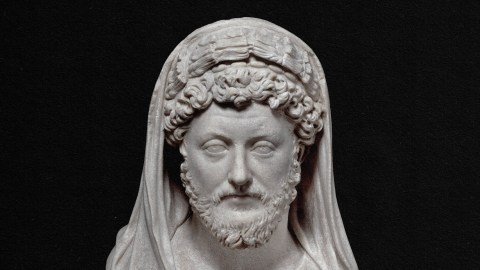Unlock success by taking control of “disempowering narratives”

- Even though most of what happens to us is either neutral or positive, our assumptions and predictions tend to skew negative.
- Our disempowering stories can keep us from achieving our visions.
- When you choose a more empowering perspective, the ripple effects of positive change can be profound.
You are a half-hour into your day when your phone chimes with a text from your boss: “Please call me asap.”
What’s the first thought that comes to mind? It’s probably not, I’ve been nominated for an award or She loved the report I sent. Suddenly, your mood has plummeted, your palms are sweaty, and you want to do just about anything other than make that call.
Then, two minutes later, you get another text: “I’ve got an idea for today’s meeting that I want to run by you.”
We’ve all starred in this movie at some point—because we’re human. In the last thirty days, you probably created a mental story in response to something that happened. Maybe it was a confusing email from your biggest client or a non-response from the person you’ve been dating for six months. You spent time and emotional energy worrying about it, creating stress and anxiety in your day. And then it turned out to be fine, or better than fine. You were relieved, but you also felt emotionally or mentally exhausted.
Even though most of what happens to most of us in any given day is neutral or positive, our assumptions or predictions tend to be negative. We add significance and drama to situations and circumstances, often when there’s no proof of either.
If you’re telling yourself positive stories, like “I did so well in that presentation” or “I’ve never looked better,” great! Keep going. What we want to help you tackle are the negative, disempowering stories that create unnecessary suffering, stress, and anxiety.
Some stories can be short-lived, like the examples above, but the more costly stories are those that we have been telling ourselves and reinforcing for months, years, even decades—like “My boss doesn’t appreciate me”, “That team doesn’t care”, or “Nothing I do is good enough for my parents.” These stories convince us that some things simply cannot be changed, cannot be any better than they are right now. They have a big impact on our happiness, confidence, resilience, relationships, and well-being.
For all these reasons, our disempowering stories keep us from creating the life we want and keep us from achieving our visions. They’re often interwoven with our limiting beliefs. They influence how we behave in the present, so they influence what’s possible in the future. They self-perpetuate.
You have zero control over other people and many circumstances, but you have 100 percent choice in your perspective.
We’ve known this for thousands of years. The Stoic philosopher-king Marcus Aurelius, writing about how to respond to the things that happen to us, said, “Choose not to be harmed—and you won’t feel harmed. Don’t feel harmed—and you haven’t been . . . It doesn’t hurt me unless I interpret its happening as harmful to me. I can choose not to.”
When you choose a more empowering perspective, the ripple effects of positive change can be profound. It helps to start by understanding the source of your stories and their impact in your life. As you may have noticed in the last two sentences, we use the words “story” and “perspective” interchangeably.
Facts are indisputable data points, without much emotion or drama. Your perspective is a story your brain makes up about those facts.
The brain is a meaning-making machine. It collects bits of information and uses them to interpret the world—to create a story. The brain does this so that it can quickly interpret what’s happening now and predict what will happen next—to keep us alive. Our stories become the lens through which we see the world. They influence how we perceive people and situations and what we expect about our future. Here’s the problem: They are based on our perception and the brain’s interpretation. They are not reality or fact.
Facts are indisputable data points, without much emotion or drama. Your perspective is a story your brain makes up about those facts. “I’m in a meeting speaking to eight people” is a fact. “I’m doing a great job of sharing my ideas with my team” is a story or perspective (a good one!). “I am forty-eight” is a fact. “I’m getting old” is a perspective. “He’s been my manager for three years” is a fact. “He’s never going to put me up for promotion” is a perspective.
We relate to our perspective like it’s the only perspective, like it’s the truth—but it usually is not.
If something is the truth, there can’t be any other possibilities, which means the story can’t change, and the future can’t look different than the past. We’ll be stuck in that story until we choose to change it. While we may not be able to control the facts, we can control the story we tell ourselves and other people. When we do, it’s like we’ve chosen to put on a different pair of glasses. We see the world differently.





